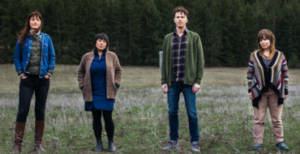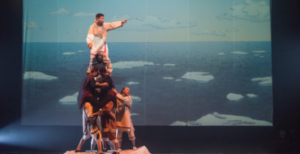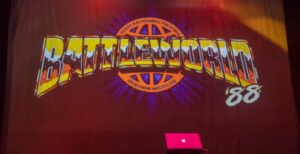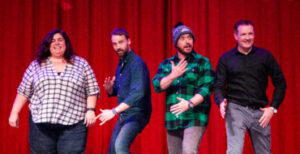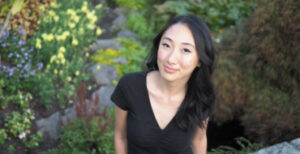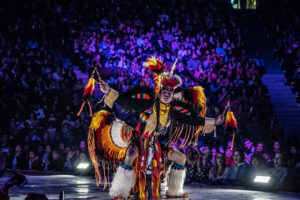On Tuesday, February 19 Vancouver arts and culture lovers gathered at the Roundhouse Community Arts & Recreation Centre to cheer 20 years of Full Circle productions. Each year Vancouver is host to the Talking Stick Festival, organized by Full Circle: First Nations Performance. The festival features 10 days of Aboriginal cultural experiences and performances from a wide range of traditional and contemporary disciplines. The Talking Stick is an opportunity to showcase established and emerging First Nations, Metis and Inuit artists from all areas of the performing arts: theatre, dance and drumming, spoken word, music and multimedia performance.
At this year’s Illumina’tive Gala, the night was about both celebrating and saying thanks for two decades worth of hard work by Margo Kane and her team at Full Circle as well as the community support from sponsors such as VanCity, the Holiday Inn and the BC Nurses Union. Since 1993, Kane and her team at Full Circle have nurtured the careers of many Canadian Aboriginal performers such asGit Haytesk Dancers, fiddler Wesley Hardisty and choreographer Lara Kramer.
Illumi’native also served as one part kick off to the annual Talking Stick Festival and one part retrospective on the work of Kane and her colleagues. The gala program included drum groups from the Squamish and Tsleil-Waututh Nations performing traditional dances, a video retrospective of 20 years worth of Full Circlefestivals, workshops and educational programming and local spoken word maestro Zaccheus Jackson even shared a beat poem written about the Talking Stick. Other musical performers included local jazz-influenced duo Sister Says and electronic music stylings of DJ Tracy D.
It was obvious there was a lot of admiration and respect for the hard work of Kane andFull Circle. Introducing Ms. Kane, the MC of the night called her a ‘triple threat Aboriginal artist who hasn’t had an idle day in her life.’
“This will be our fourth Talking Stick Festival,” explained Rob Thomson, one half of the sibling band Sister Says. “We always like performing at Talking Stick because there’s such a variety of Aboriginal entertainment: from Maori, Inuit and groups from across North America.”
“I don’t usually have time for catering gigs,” said Chef Ben Genaille of Kanata Cuisine. Genaille, an Aboriginal culinary arts instructor at both Vancouver Community College and Thompson Rivers University says he doesn’t have much time to cater these days except when it comes to the annual Talking Stick gala. “I make an exception for the Talking Stick festival, I’ve been involved for the last eight years or so.”
This year’s Talking Stick Festival will take place from February 19 – March 3 at venues throughout the city including the Roudhouse Community Arts & Recreation Centre, The Historic Theatre at the Cultch, Zawa Restaurant and SFU downtown. The Talking Stick Festival provides the opportunity to explore and experience Aboriginal culture from a wide range of traditional and contemporary disciplines including: theatre, dance and drumming, spoken word, music and multimedia performance.
The festival is split into three main streams: the headliner series focusing on music, dance and theatre, the development series (Live on the Drive) focusing on storytelling and family friendly performances and finally the Festival plus series featuring poetry slams. This year’s headline shows include: Canada’s Got Talent winners Sagkeeng’s Finest, comedy group the 1491s and plays Café Daughter, The Great Mountain and Agokwe.
What makes the Talking Stick Festival unique is also the arts development angle to the fest. There will be workshops for artists and arts groups on everything from grant writing, budgeting and planning for success.
For more information click here, for tickets click here.
Sidebar: What is a Talking Stick?
The Talking Stick was a symbol of power, honor and integrity among many tribes of nations for many years. Its origins lie within the start of the Indigenous American people as a means of communication at council meetings, war parties and negotiations. As a courtesy not to interrupt a Chief when he was speaking during an important meeting, whoever wished to speak held the Talking Stick. Whoever wasn’t holding the Talking Stick remained silent so that they could hear who had the floor. As a guide to those who were holding the Talking Stick to make good decisions, the Indigenous Americans believe that the stick was imbued with spiritual qualities that called up the spirit of their ancestors. All members then were ensured that the ideas of the speaker were heard and all members of the talking circle were valued equally. To better show its significance, Talking Sticks were decorated pieces usually elaborately designed in a multitude of ways including: carved with animals of spiritual significance or wrapped with hyde with feathers and bead work. Talking Sticks are still prevalent today in aboriginal communities and are, in particular used in talking circles.
From: http://www.fullcircleperformance.ca/talking-stick-festiva-overview
